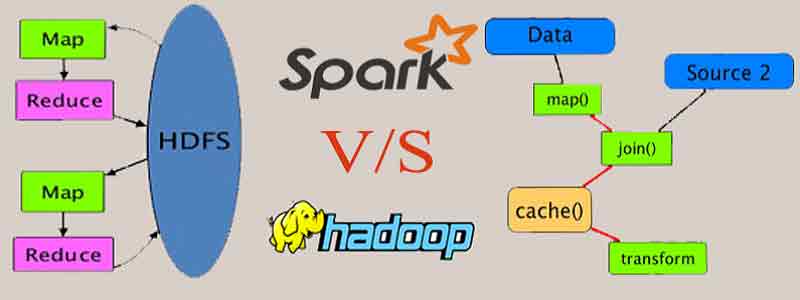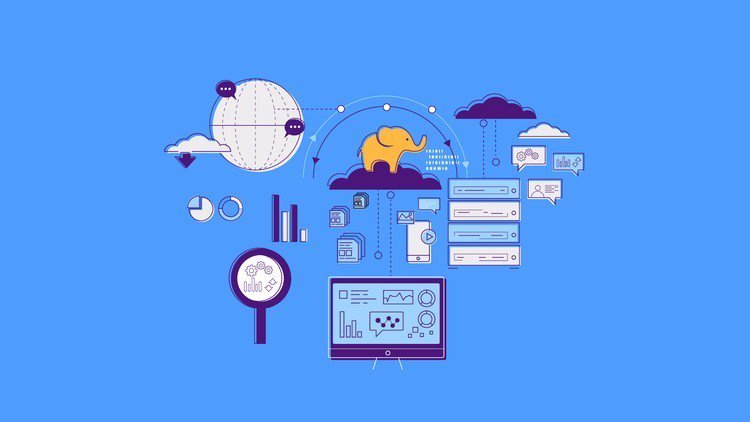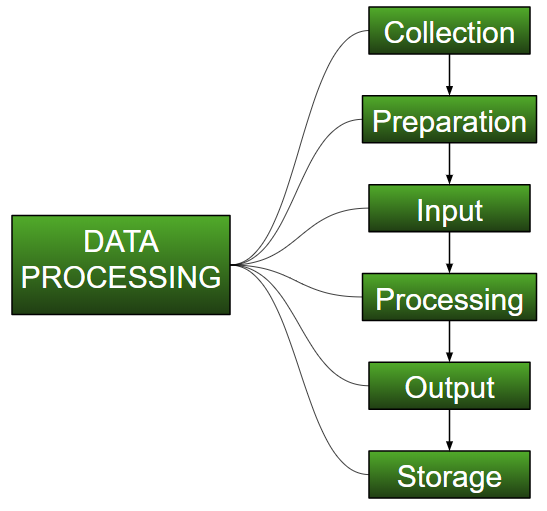Many free options exist now for processing large amounts of data Hadoop vs Spark: A Detailed Comparison. To supplement the open-source platforms, many businesses also provide specific enterprise functionality.
The advent of Apache Lucene in 1999 marked the beginning of the trend. The framework quickly became open-source, which sparked the development of Hadoop. Apache Hadoop and Apache Spark, two of the most widely used big data processing frameworks in use today, are both open source.
It’s never clear if Hadoop or Spark should be used as the framework.
Learn the main differences between Hadoop and Spark in this article, as well as whether to use them separately or in tandem.
What is Hadoop?
A technology called Apache Hadoop is used to manage huge datasets in a distributed manner. The data is divided into blocks by the framework, which uses MapReduce to distribute the pieces among cluster nodes. The data is then processed simultaneously by MapReduce on each node to provide a different result.
Each device in a cluster processes and stores data. HDFS is used by Hadoop to store the data on drives. Options for seamless scaling are provided by the software. One machine can be the starting point, and you can add any kind of enterprise or commodity hardware as you grow to thousands of machines.
The Hadoop ecosystem is very resilient to errors. Hadoop can provide high availability without relying on hardware. Hadoop is fundamentally designed to search for application layer faults. When a piece of hardware breaks, the framework can assemble the missing pieces from another location thanks to data replication throughout a cluster.
The four primary modules of the Apache Hadoop Project are as follows:
- HDFS – Distributed File System in Hadoop. This file system controls how big data sets are stored within a Hadoop cluster. Both organized and unstructured data can be handled using HDFS. The storage hardware might be anything from business drives to consumer-grade HDDs.
- MapReduce – The part of the Hadoop ecosystem responsible for the processing. It distributes the HDFS data fragments throughout the cluster’s several map operations. To put the parts together into the desired outcome, MapReduce processes the chunks in parallel.
- YARN – An Additional Resource Negotiator accountable for organizing jobs and allocating computing resources.
- Hadoop Standard – the group of shared utilities and libraries on which other modules rely. Given that it supports all other Hadoop components; this module is often known as the Hadoop core.
Hadoop is available to everyone who needs it because of its nature. The enormous open-source community cleared the way for big data processing to be accessible.
What is Spark?
A free and open-source tool is Apache Spark. This framework is compatible with a variety of platforms, including standalone mode, cloud, or cluster managers like Apache Mesos. It employs RAM for caching and data processing and is designed for quick speed.
Different kinds of big data workloads are handled by Spark. This covers interactive queries, real-time stream processing, machine learning, graph computation, and batch processing similar to MapReduce. Spark can interface with many other libraries, including PyTorch and TensorFlow, because of its simple-to-use high-level APIs. Visit our post on PyTorch vs. TensorFlow to understand more about the distinctions between these two libraries.
In order to increase MapReduce’s effectiveness while maintaining its advantages, the Spark engine was developed. Spark doesn’t have a built-in file system, but it can nevertheless access data from many other types of storage. Spark employs a data structure known as a Resilient Distributed Dataset (RDD).
Apache Spark is made up of five primary parts:
- Spark Core for Apache – the foundation of the entire enterprise. The necessary tasks including scheduling, task distribution, input and output operations, fault recovery, etc. are handled by the Spark Core. On top of it, further features are constructed.
- Streaming with Spark – Live data streams can be processed with the help of this component. Data can come from a wide range of sources, such as Kafka, Kinesis, Flume, and others.
- Sprocket SQL – This component is used by Spark to learn more about structured data and the processing of the data.
- Library for Machine Learning (MLlib) – There are numerous machine learning algorithms in this library. Scalability and increased accessibility are the two main objectives of MLlib.
- GraphX – a collection of APIs for tasks related to graph analytics.
Basic Difference Between Hadoop and Spark
The key differences and parallels between the two frameworks are outlined in the following sections. We’ll compare Hadoop with Spark from several perspectives.
Cost, effectiveness, security, and usability are a few of these. The conclusions drawn in the following sections are summarized in the table below.
Detailed Comparison Hadoop vs Spark
| Category for Comparison | Hadoop | Spark |
| Performance | Slower performance, uses disks for storage and depends on disk read and write speed. | Fast in-memory performance with reduced disk reading and writing operations. |
| Cost | An open-source platform, less expensive to run. Uses affordable consumer hardware. Easier to find trained Hadoop professionals. | An open-source platform, but relies on memory for computation, which considerably increases running costs. |
| Data Processing | Best for batch processing. Uses MapReduce to split a large dataset across a cluster for parallel analysis. | Suitable for iterative and live-stream data analysis. Works with RDDs and DAGs to run operations. |
| Fault Tolerance | A highly fault-tolerant system. Replicates the data across the nodes and uses them in case of an issue. | Tracks RDD block creation process, and then it can rebuild a dataset when a partition fails. Spark can also use a DAG to rebuild data across nodes. |
| Scalability | Easily scalable by adding nodes and disks for storage. Supports tens of thousands of nodes without a known limit. | A bit more challenging to scale because it relies on RAM for computations. Supports thousands of nodes in a cluster. |
| Security | Extremely secure. Supports LDAP, ACLs, Kerberos, SLAs, etc. | Not secure. By default, the security is turned off. Relies on integration with Hadoop to achieve the necessary security level. |
| Ease of Use and Language Support | More difficult to use with less supported languages. Uses Java or Python for MapReduce apps. | More user friendly. Allows interactive shell mode. APIs can be written in Java, Scala, R, Python, Spark SQL. |
| Machine Learning | Slower than Spark. Data fragments can be too large and create bottlenecks. Mahout is the main library. | Much faster with in-memory processing. Uses MLlib for computations. |
| Scheduling and Resource Management | Uses external solutions. YARN is the most common option for resource management. Oozie is available for workflow scheduling. | Has built-in tools for resource allocation, scheduling, and monitoring. |
Performance
Its strength does not seem logical to compare the effectiveness of the two frameworks when we evaluate the way that Detailed Comparison of Hadoop vs Spark process data. However, by drawing a line, we can clearly see which tool is faster.
Hadoop improves overall performance by gaining access to the data kept locally on HDFS. It cannot, however, compete with Spark’s in-memory processing. According to Apache, Spark appears to be 100x quicker than Hadoop with MapReduce when using RAM for computation.
Sorting data on discs continued to be dominant. To handle 100TB of data on HDFS, Spark was 3 times faster and required 10 times fewer nodes. This standard was sufficient to establish the world record in 2014.
Spark’s dominance is primarily attributable to the fact that it leverages RAM rather than reading and writing intermediate data to drives. Hadoop stores data from numerous sources and uses MapReduce to process it in batches.
The above-mentioned factors could make Spark the clear victor. Hadoop is a more sensible option if the size of the data exceeds the amount of RAM that is available. The expense of maintaining these systems should also be taken into account.
Cost
We must look beyond the software’s cost when contrasting Detailed Comparison Hadoop vs Spark in terms of cost. Both systems are open-source and cost nothing to use. However, to obtain a general estimate of the Total Cost of Ownership, the costs associated with infrastructure, upkeep, and development must be considered (TCO).
The underlying hardware required to run these tools is the most important component of the cost category. Hadoop has a low operating cost because it uses any kind of disc storage for data processing.
However, Spark relies on in-memory operations to handle data in real time. Therefore, spinning up nodes with gobs of RAM substantially raises the cost of ownership. The development of applications is another issue. Compared to Spark, Hadoop has been around longer and is easier to get software engineers for.
The aforementioned arguments imply that Hadoop infrastructure is more economical. This is true, however, it’s important to remember that Spark processes data considerably more quickly. As a result, fewer machines are needed to do the same activity.
Processing of Data
The way the two frameworks handle data differs greatly. Although data is processed in a distributed setting by both Hadoop with MapReduce and Spark with RDDs, Hadoop is better suited for batch processing. Detailed Comparison Hadoop vs Spark, in comparison, excels in real-time processing.
Hadoop’s objective is to store data on discs for later parallel batch analysis across a distributed environment. For handling enormous amounts of data, MapReduce does not need a lot of RAM. Hadoop is best suited for linear data processing and relies on standard hardware for storage.
With durable distributed datasets, Apache Spark is effective (RDDs). A distributed collection of elements stored in partitions on cluster nodes is known as an RDD. An RDD is typically too big for a single node to handle. Spark divides the RDDs among the nearby nodes and executes the operations in parallel as a result. The system uses a Directed Acyclic Graph to keep track of all operations made on an RDD (DAG).
Spark efficiently manages live streams of unstructured data because to its in-memory computations and high-level APIs. Furthermore, a predetermined number of divisions are used to hold the data. There can be as many partitions on a single node as necessary, but a partition cannot spread to another node.
Fault Tolerance
In terms of fault tolerance, we can state that a Detailed Comparison of Hadoop vs Spark both offer a decent amount of failure handling. We can also claim that their approaches to fault tolerance are different.
Fault tolerance serves as the foundation for how Hadoop functions. Data is replicated numerous times among the nodes. In the event of a problem, the system picks up where it left off by constructing the missing blocks from other places. All slave nodes are kept up to date by the master nodes. Finally, the master transfers the pending jobs to another slave node if a slave node does not react to pings from it.
RDD blocks are used by Spark to achieve fault tolerance. The system keeps track of the creation of the immutable dataset. When a difficulty arises, it can then restart the process. A cluster’s data can be rebuilt using Spark by employing DAG tracking of the operations. Spark can manage faults in an environment of distributed data processing thanks to this data structure.
Scalability
In this part, the Detailed Comparison of Hadoop vs Spark becomes hazy. HDFS is used by Hadoop to handle massive data. Hadoop can easily scale to meet demand when the amount of data grows quickly. When data becomes too huge to handle, Spark must rely on HDFS because it lacks its own file system.
By connecting more computers to the network, the clusters can quickly grow and increase their computational capability. As a result, both frameworks can include thousands of nodes. There is no hard limit on the number of servers that can be added to each cluster or the amount of data that can be processed.
8000 machines in a Spark environment with petabytes of data are among the verifiable figures. Hadoop clusters are well recognized for supporting close to an Exabyte of data and tens of thousands of workstations.
Support for Programming Languages and Usability
Although Spark is a newer framework than Hadoop. It is known to be more user-friendly even though there aren’t as many experts available. As opposed to Scala, which is supported just by Scala, Spark also supports Java, Python, R, and Spark SQL. This enables programmers to utilize their preferred programming language.
On Java, the Hadoop framework is built. Java or Python are the two most popular languages for building MapReduce code. Hadoop lacks an interactive option for user assistance. To make it easier to write complicated MapReduce programs, it interfaces with the Pig and Hive tools.
Along with supporting APIs in numerous languages, Spark also excels in the area of usability because to its interactive mode. Scala or Python programs can analyze data interactively using the Spark shell. Spark is simpler to use than Hadoop MapReduce because of the shell’s rapid reply to queries.
Spark has an advantage over other frameworks in that programmers can reuse older code when appropriate. Developers can shorten the time needed to create an application by doing this. Data from the past and streams can be combined to make this process even more effective.
Security
We’ll let the cat out of the bag right immediately when Detailed Comparison Hadoop vs Spark security: Hadoop is the undisputed champion. In particular, Spark’s security is disabled by default. If you don’t solve this problem, your setup is exposed.
Spark’s security can be increased by adding shared secret authentication or event recording. That is insufficient for production workloads, though.
Hadoop, in comparison, utilizes a variety of mechanisms for access control and authentication. Kerberos authentication is the most challenging to put into practice. Hadoop also supports Ranger, LDAP, ACLs, inter-node encryption, common file permissions on HDFS, and Service Level Authorization in case Kerberos proves to be too difficult to handle.
However, by connecting with Hadoop, Spark can achieve an appropriate level of security. Spark will then be able to utilize all Hadoop and HDFS methods. Additionally, you can benefit from the advantages of the other authentication techniques we previously described when Spark is running on YARN.
Learning Machines
Iterative machine learning is a process that benefits from in-memory computing. Spark has thus far proven to be a quicker solution in this regard.
This is because Hadoop MapReduce divides tasks into parallel ones, some of which may be too big for machine learning algorithms. These Hadoop applications experience I/O performance difficulties as a result of this approach.
In Hadoop clusters, the Mahout library serves as the primary machine-learning platform. Mahout uses MapReduce to carry out classification, clustering, and recommendation. Samsara began to supplant this undertaking.
A default machine learning library called MLlib is included with Spark. Iterative ML calculations are carried out in memory by this library. It has tools for doing many different tasks, such as pipeline construction, evaluation, persistence, regression, classification, and many more.
In a Hadoop disk-based architecture, Spark with MLlib outperformed Apache Mahout by a factor of nine. For machine learning, Spark is preferable to Hadoop when you require more effective outcomes.
Planning and Resource Control
A scheduler is not a feature of Hadoop. For scheduling and resource management, it makes use of outside solutions. Resource management in a Hadoop cluster is handled by YARN in conjunction with Resource Manager and Node Manager. Oozie is one of the tools that may be used to schedule workflows.
Individual application state management is not a concern of YARN. Only available processing power is distributed.
Plug-ins like Fair Scheduler and Capacity Scheduler are compatible with Hadoop MapReduce. These schedulers keep a cluster’s efficiency high by ensuring that applications get the necessary resources when they’re required. The Fair Scheduler ensures that all apps ultimately receive the same resource allocation by allocating the required resources to them while keeping track of this.
On the other hand, Spark already includes these features. Stage-based operator separation is the responsibility of the DAG scheduler. Each level contains a number of duties that Spark and DAG must complete.
In a cluster, tasks and jobs are scheduled, monitored, and resource distribution is handled by Spark Scheduler and Block Manager.
Final Words
In a number of categories, this article contrasted Apache Detailed Comparison Hadoop vs Spark. Both frameworks are essential to the development of big data applications. Despite the fact that Spark appears to be the preferred platform because of its speed and user-friendly mode, some use cases necessitate the use of Hadoop. This is particularly true if there is a lot of data to examine.
Spark uses less hardware to accomplish the same tasks as Hadoop, but maintenance costs are higher. You should keep in mind that both frameworks offer benefits and that they function best when together.
You should gain a better knowledge of what Detailed Comparison Hadoop vs Spark each have to offer by going through the topics provided in this guide.


















